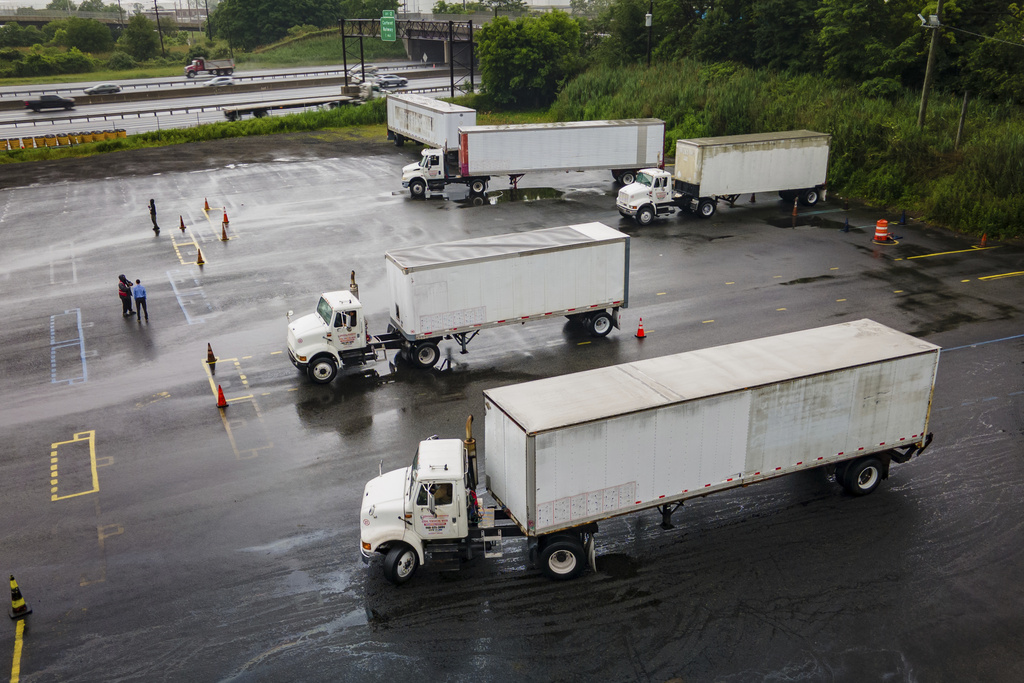The system used to determine financial aid packages for millions of college students got revamped, but the transition has been anything but smooth, with glitches in calculations for federal Pell grants and setbacks in the rollout for the FAFSA, or Free Application for Federal Student Aid.
Around this time of year, high school seniors bound for college and active college students should be weighing financial offers from those schools.
But those decisions are delayed.
Vanessa Mendiola would like to know where she's headed this fall.
"I've applied to University of Texas-San Antonio, Lamar University, University of North Texas, Texas A&M, Kingsville," Mendiola, an 18-year-old senior at Houston's YES Prep Southside Secondary Charter School, told Scripps News. Those institutions are among the college acceptances Mendiola is considering, but with a big catch: She hasn't gotten any news of the financial aid she needs to pay for school.
"It makes me frustrated not knowing where I'm going to end up," said Mendiola.
Her college counselors share her frustration; they field questions every day from anxious students and parents, many of whom are first-generation college-bound seniors.
Roberto Treviño, managing director of college initiatives at the YES Prep charter school system, said roughly 80% or more of the outgoing 1644 high school seniors at YES plan on going to a university or a community college, but need financial aid to make those ambitions possible.
"The irony is that this FAFSA is literally called the better FAFSA, and I think long-term-wise, it will be better. But this year, it's far from that," Treviño said.
The same uncertainty about tuition assistance goes for Texas Southern University junior Logan Jackson.
"It's really important because it basically pays for most of my education," Jackson said.
The 21-year-old told Scripps News she struggled with changes to this year's FAFSA.
"I know one of the delays was actually being able to do it. Like some people were like, 'Okay, it's not working. It's down. Then it's back up," Jackson said.
FAFSA is administered by the U.S. Department of Education. The forms help colleges calculate federal Pell grants and financial aid packages for students.
The U.S. Congress passed a law in 2020 mandating that department officials simplify the byzantine application by requiring fewer questions. The law also enables FAFSA to pull tax information directly from the IRS, and allows parents without Social Security numbers to fill out the form. The changes also expanded eligibility for Pell grants for low-income students.
But the update meant to widen financial aid access took months longer than expected. Other glitches in the student aid index to calculate Pell grants put the process back even further.

FAFSA fumble: Millions still waiting for financial aid letters
Delays in the federal financial aid system have left millions of college students in limbo this year. Here's what parents and students can do.
Latisha Addison, the executive director for student financial success at the historically Black Texas Southern University, said Congress had the right intentions to fix the FAFSA process but says her department at Texas Southern University is dealing with the fallout of the botched rollout.
"I do believe that was released prematurely, but the overall good of it, it can't go unnoticed. We can't take away the fact that this is going to be beneficial to more students," Addison said.
Addison added that financial aid programs help the vast majority of Texas Southern undergraduates pay for their education.
"I think we're probably set in about 90, 95% of our students receive some type of financial aid," Addison said.
The setbacks are causing delays for millions of college-bound high school seniors as well as already active college students.
Janiya Ross, a continuing senior student at the University of Houston, is perplexed by the lateness. "Now it's like we're scrounging for money; how much is it gonna cost?" Ross said.
Freshman education major Vanessa Manzanares said the delays cause anxiety.
"It's like really stressful not to know if I'm going to be able to afford college next year, especially."
The offers for the next academic year can't come soon enough for UH student Janoah Agudelo.
"As college students, we gotta know, like, where the money's going to be because we have to pay certain things off, you know, bills," Agudelo said.
Another factor causing concern among universities and groups that look at student data is that FAFSA applications for next year's term are down.
The National College Attainment Network is a nonprofit dedicated to helping students prepare for, apply to, and succeed in college. NCAN also maintains a database tracking FAFSA submissions.
"We are, at this point, very significantly below where we were last year," said NCAN senior policy director Catherine Brown. "Twenty-five percent fewer high school students have submitted the FAFSA compared with this time last year. That's about 500,000 fewer students. And when it comes to completions, we're at more like 40%," Brown said.
When colleges do get the data, financial aid offices will have to deal with a bottleneck of applications.
"Once the floodgates open in two weeks, we'll be processing full-time," said Frank Gomez, associate director of federal processing at UH's Financial Aid and Scholarships Office. "We'll be processing tens of thousands of applications."
The University of Houston has close to 36,000 undergraduates, and around 40% of the student body receives some form of financial aid, said Gomez. He expects to work long hours when the data comes his way in May, when he expects the FAFSA forms to arrive.
Mendiola says she may already be done with high school by the time she knows her fall plans.
"We don't know what to do in this type of situation, but just wait patiently," Mendiola said.
The U.S. Department of Education acknowledged the slow rollout and the glitches that had to be addressed, but added that the 2024–2025 changes amount to the most significant overhaul of the form since it was created. Adding to that, the effort includes over 20 systems, some of which have not been updated in close to 50 years. The federal agency mounted a public awareness campaign this week to encourage more high school seniors and active students to submit their FAFSA forms.











